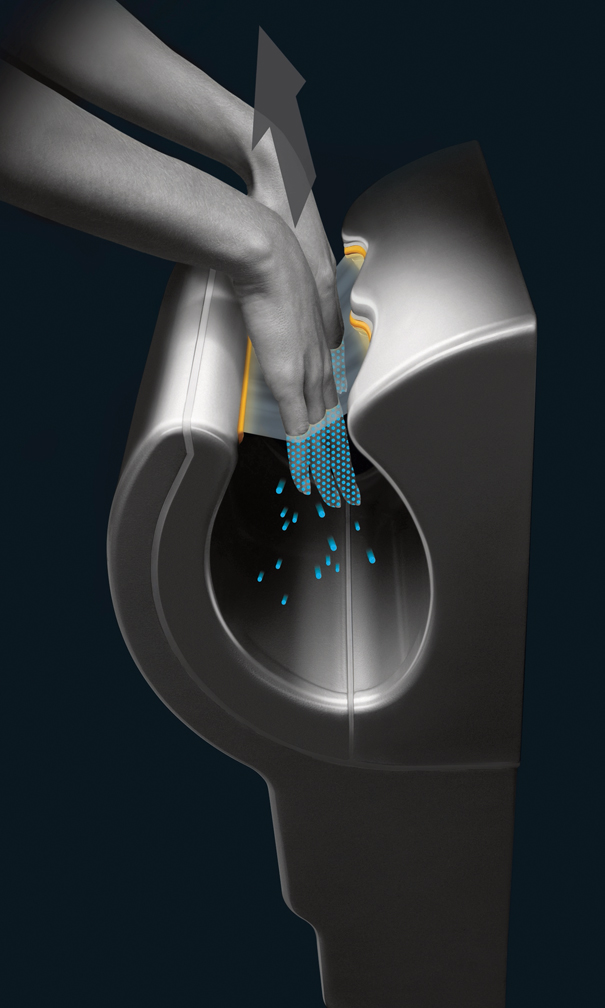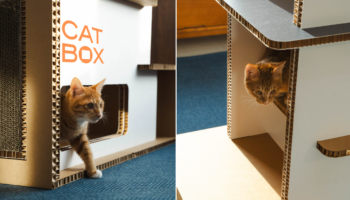Dyson Airblade
One of the funnier instances of graffiti I’ve ever seen is, surprisingly, not on a bathroom stall door, wall, or floor but, rather, adjacent to the sink and next to the hand dryer in the Men’s Public Restroom of The Last Steep restaurant in Crested Butte, Colorado: “Instructions For Use: 1. Push button to operate hand dryer machine; 2. Rub hands gently under warm air of hand dryer; 3. Wipe hands on pants.”
Dyson Airblade, hand dryer. Manufactured by Dyson.
The brief missive speaks to anyone who, rapt with wonder at the innumerable emblems of technological advancement - the Microprocessor, for instance, or the Nanotube, or the hands-free parking feature of the Lexus LS 600h L - is nevertheless doomed to wonder in existential angst, “why can’t anyone come up with a decent hand dryer!” Well… your moment has come, o semi-incredulous user of public amenities. Allow me to present the Dyson Airblade, the world’s first and only touch-free hand dryer that actually works. Why/how does the Airblade work so well? Let’s let Dyson’s P.R. people take it from here: “Traveling at over 400 miles per hour, pressurized air is released through an aperture the width of an eyelash. The sheet of air effectively wipes unwanted moisture from hands to leave them dry in just 12 seconds. Your customers spend less time waiting for their hand dryer to work and you spend less money paying for it.” The idea for this marvel of moisture removal took seed when a Dyson engineer was investigating the properties of airflow. He discovered that “when he put his wet hands in front of a gust of unheated air, the water was removed in just a few seconds.”

Thus, the key to Dyson’s functionality is this paradigm shift in towel-free hand-drying. The Airblade features two nifty hand-sized apertures. When you insert said appendages, the device blows room-temperature air through the aforementioned tiny slit. As you gradually remove them (12 seconds is the recommended duration), the sheet of air whisks away the water, just as you might use compressed air to extract the cookie crumbs from your keyboard. The distinction is crucial, since the conventional hand dryer with its clumsy gust of hot air not only dries out your skin but also blows bacteria-laden air throughout the immediate vicinity. And the Dyson boasts an anti-microbial coating and a Hepa filter, so the expelled air is clean and the dryer surface is germ-free. Throw sustainability into the mix-Dyson’s digital motor has no heating element, so it uses only 1400 Watts of power (compared to 2400 for conventional dryers), and the Airblade’s Infra-red sensory technology facilitates instant shut-off, so there’s no superfluous air blowing into empty space-and we can all say “Hallelujah! They’ve finally created a better, cheaper iPhone,” and-ahem-a hand dryer that fills the bill.




Leave a Reply